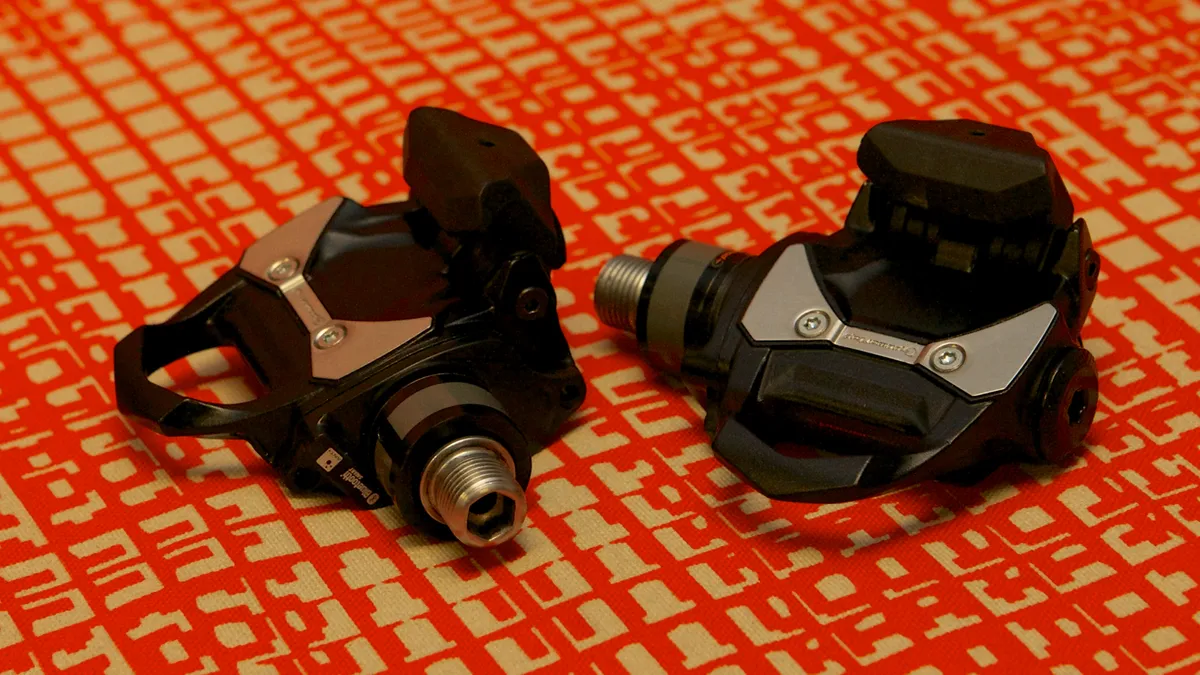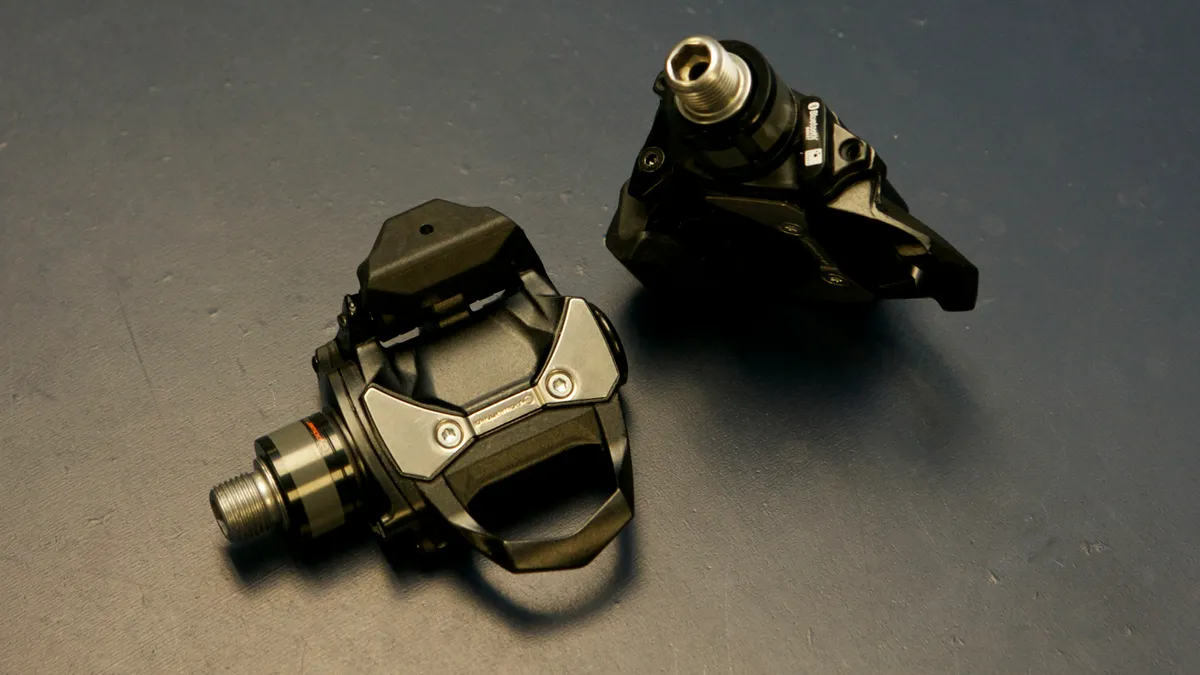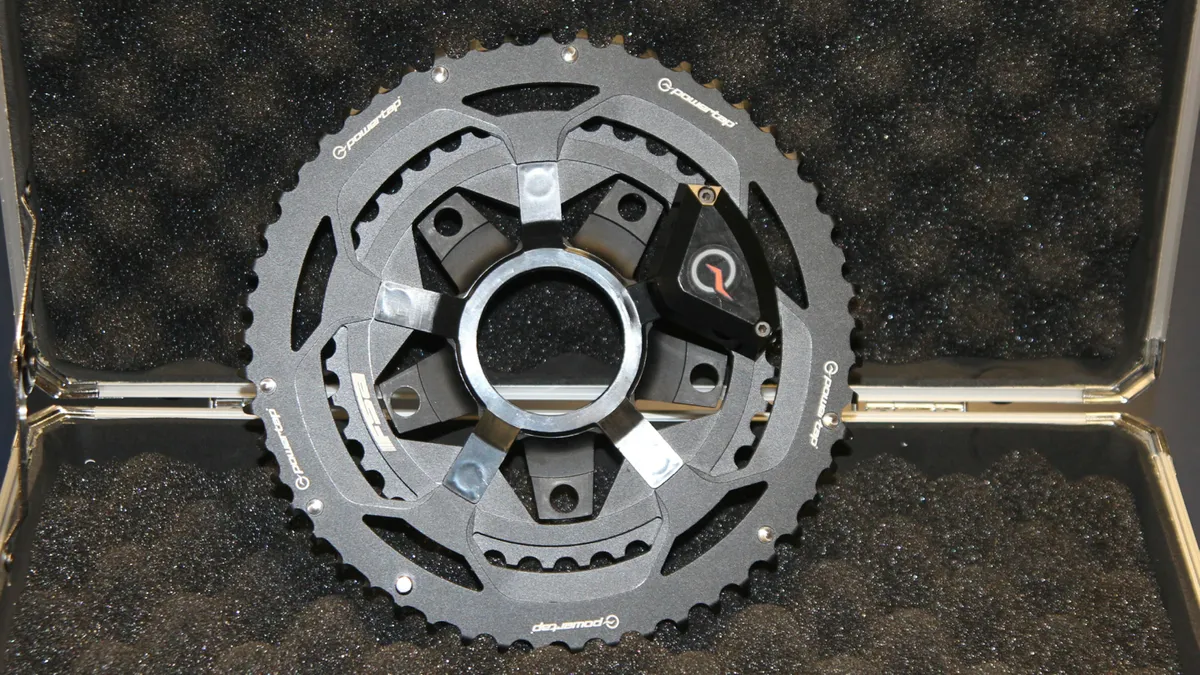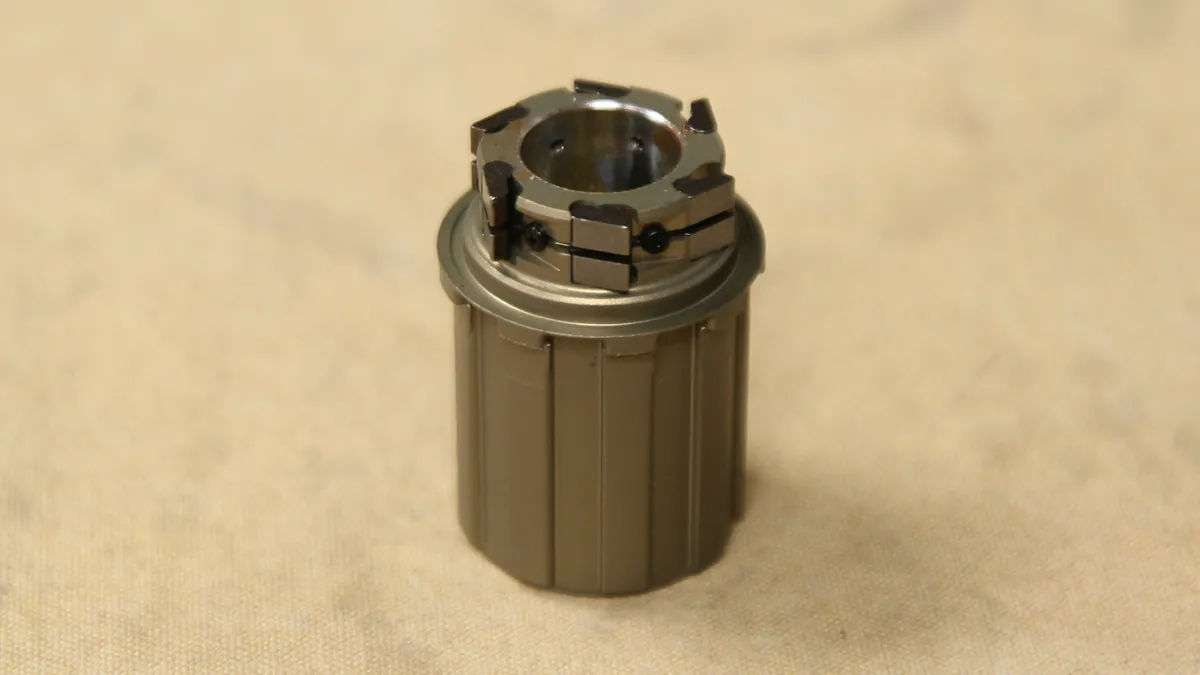After nearly two decades of selling a successful hub-based power meter, PowerTap has expanded its wattage-measuring offerings with a set of pedals and a spider/chainring combo. The PowerTap P1 pedals weigh a claimed 398g and will retail for US$1,199 / £999, while the C1 spider and rings will sell for US$699 / £549.
For years, the power meter market had essentially two players: the steeply priced and spider-based SRM, and the more affordable and hub-based PowerTap. In recent years, however, a variety of new players have jumped in, from the spider-based Quarq and Power2Max systems to the crank-based Rotor, Stages and Infocrank options to the pedal-based Garmin Vector and Polar Look Power.
PowerTap president Jeff Frehner told BikeRadar that it's been hard for the company to watch new competing products come out while engineers worked on the pedal and spider systems, but that they are pleased with the new PowerTap power meters. Interestingly, Frehner said PowerTap had initially sought to buy MetriGear, the spindle-based power meter concept that eventually became Vector, but that "we got outbid by Garmin."
Further, Frehner and longtime company consultant Dr. Allen Lim said they still believe that the hub is still the most straightforward place to measure a rider's output. "T<!-- /* Font Definitions */ @font-face {font-family:"MS 明朝"; mso-font-charset:78; mso-generic-font-family:auto; mso-font-pitch:variable; mso-font-signature:-536870145 1791491579 18 0 131231 0;} @font-face {font-family:"Cambria Math"; panose-1:2 4 5 3 5 4 6 3 2 4; mso-font-charset:0; mso-generic-font-family:auto; mso-font-pitch:variable; mso-font-signature:-536870145 1107305727 0 0 415 0;} @font-face {font-family:Cambria; panose-1:2 4 5 3 5 4 6 3 2 4; mso-font-charset:0; mso-generic-font-family:auto; mso-font-pitch:variable; mso-font-signature:-536870145 1073743103 0 0 415 0;} /* Style Definitions */ p.MsoNormal, li.MsoNormal, div.MsoNormal {mso-style-unhide:no; mso-style-qformat:yes; mso-style-parent:""; margin:0in; margin-bottom:.0001pt; mso-pagination:widow-orphan; font-size:12.0pt; font-family:Cambria; mso-ascii-font-family:Cambria; mso-ascii-theme-font:minor-latin; mso-fareast-font-family:"MS 明朝"; mso-fareast-theme-font:minor-fareast; mso-hansi-font-family:Cambria; mso-hansi-theme-font:minor-latin; mso-bidi-font-family:"Times New Roman"; mso-bidi-theme-font:minor-bidi;} .MsoChpDefault {mso-style-type:export-only; mso-default-props:yes; font-family:Cambria; mso-ascii-font-family:Cambria; mso-ascii-theme-font:minor-latin; mso-fareast-font-family:"MS 明朝"; mso-fareast-theme-font:minor-fareast; mso-hansi-font-family:Cambria; mso-hansi-theme-font:minor-latin; mso-bidi-font-family:"Times New Roman"; mso-bidi-theme-font:minor-bidi;} @page WordSection1 {size:8.5in 11.0in; margin:1.0in 1.25in 1.0in 1.25in; mso-header-margin:.5in; mso-footer-margin:.5in; mso-paper-source:0;} div.WordSection1 {page:WordSection1;} -The hub is still the simplest and the best," Lim said. "You have two things to measure: torque times angular velocity – how hard you're pushing and how fast you’re pedaling. You just have to measure bending on that tube, and how fast it’s going around in circles. With crank arms, spiders and especially pedals, there is a lot more going on." PowerTap certainly will continue to sell its hub and wheels, but adding power meters in two other components certainly gives the company and riders more options.
PowerTap also released a new G3 disc brake road hub power meter and a Joule GPS+ computer with Bluetooth.
PowerTap P1 power-meter pedals
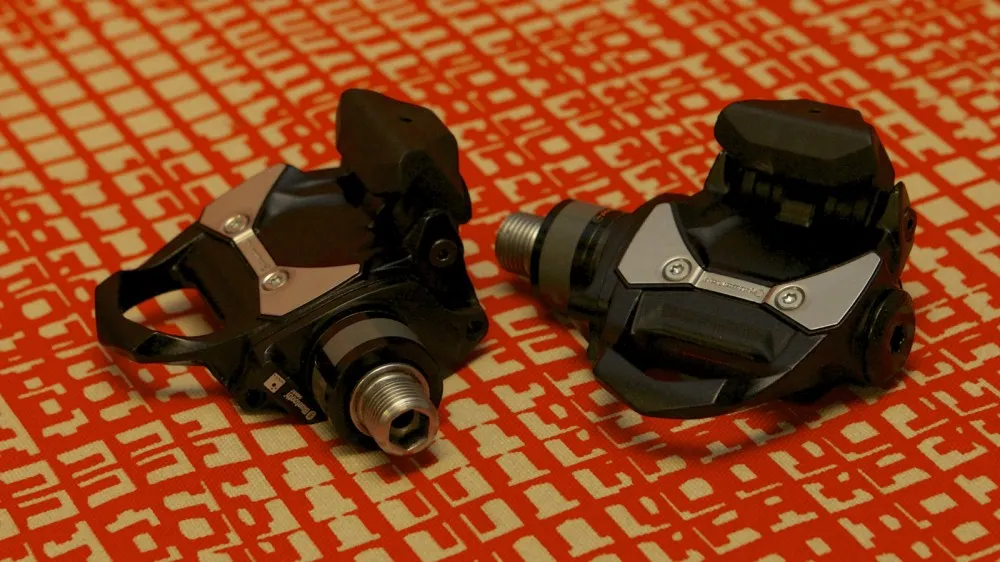
Available later this spring, the P1 power-meter pedals broadcast in Bluetooth Smart (aka 4.0) and ANT+, following suit from the Stages left-crank power meter that offered the dual-band in 2013. Unlike the Garmin Vector power-meter pedals that have outboard 'pods' hanging off the spindle, the P1 pedals have all the electronics and the battery — one AAA per side — contained in the 196g pedal. As a result, they are a little bulky but Frehner said they are waterproof and can handle getting banged around.
For reference, Garmin Vectors weigh 351g per pair, Polar Powers weigh 344g a pair, and a standard set of Shimano Dura-Ace pedals weigh 250g.
As with the Vectors, the PowerTap P1 pedals use Look KeO cleats. Why the choice? "This is what 50 percent of the world rides," Frehner said. The elastomer tension is adjustable with an Allen key.
The AAA batteries were chosen because they are easier to find in stories than a coin battery like the CR2032 used on other meters, Frehner said. Battery life is a claimed 60 hours.
Measuring at each pedal, the P1 can deliver left/right data. PowerTap product manager Justin Henkel said the pedals can also measure where power is being applied, inboard to outboard, along each pedal, but for now that information won't be displayed on a Garmin or the company's own Joule GPS computer. There is the potential for other metrics, too, such as measuring where in the stroke power is applied.
"The P1 is plug and play," Henkel said. "It automatically learns the install angle, with .5 degrees, and it automatically learns the crank arm length after a few revolutions with the built-in gyro. Also, the pedal knows where it is in the stroke, as the gyro gives a precise north/south tracking."

There is no accelerometer like in Vector and Stages, so cadence is instead measured through a digital encoder.
Accuracy is a claimed +/- 1.5 percent, as with all PowerTap power meters.
While Frehner insists that PowerTap "doesn't believe" in one-sided power, the P1 pedals have that capability, as the left pedal is the master and the right is the slave. "We don’t believe in this, but we could do it."
The P1 pedals have the same Q factor as a standard pedal, and stack height is 14mm, a little above standard. Cornering clearance, similarly, is slightly compromised at 16 degrees with a 175mm crank.
Could such a system be built into a mountain-bike pedal? "We have no immediate plans for a mountain-bike pedal," Henkel said.
PowerTap C1 Spider and Chainring
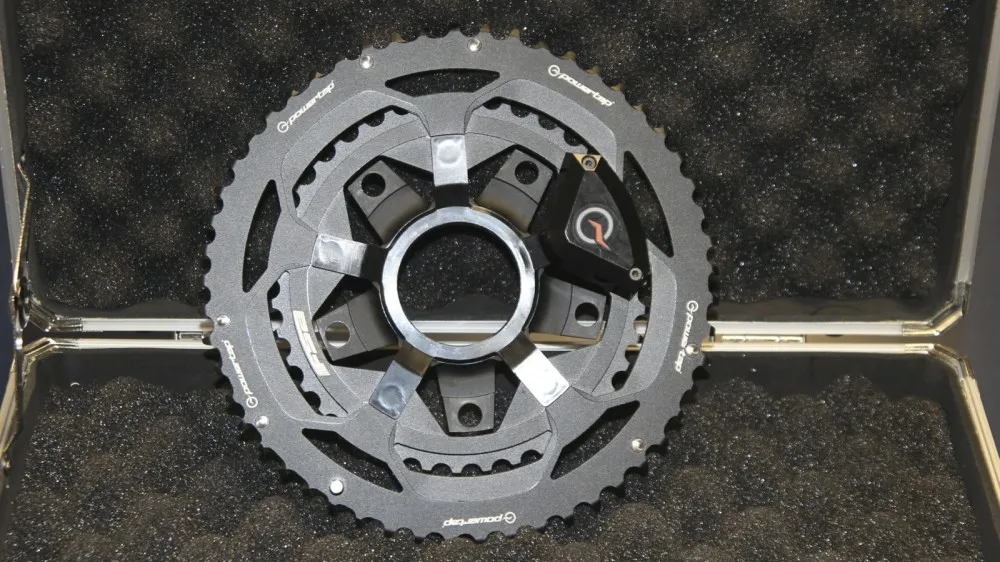
Available in late June, the PowerTap C1 spider power meter will bolt onto virtually any compact crank will a 110 BCD. (It won't work on Cannondale Hollowgram.) You cannot use your own chainrings, but must use the set FSA has made for PowerTap. There are three available chainring options: 50/36, 52/36 and 53/39. Because of the nature of the C1 spider, you cannot use a ring smaller than a 36.
To mount the C1, you take off your chainrings and bolt the C1 on where you would normally mount the small ring.
The C1 adds roughly 160g over a comparable chainring combination.
Cadence is measured via accelerometer, and left/right data is calculated by dividing the stroke in half. The C1 uses a CR2032, with a claimed 200-hour battery life.
Accuracy is a claimed +/- 1.5 percent.
PowerTap G3 Disc
For early April, PowerTap's road disc brake hub will be updated with a new hub shell. Using six pawls, a straight-pull spoke design and a smaller profile, the new G3 Disc weighs 350g, about 150g less than the previous hub. Unlike the P1 and C1, the new G3 Disc will broadcast in either ANT+ or Bluetooth, not both.
The US$989 G3 will ship with a 160mm rotor and a proprietary carrier that's necessary to encircle the power internals.
It will come with two sets of end caps to work with either 142x12mm thru-axle or 135mm quick-release frames. There will be an XX1 option and a standard 11-speed model.
Accuracy is a claimed +/- 1.5 percent.
Joule GPS+
Lastly, the PowerTap head unit gets a Bluetooth Smart upgrade for 2015, but it won't talk directly with Bluetooth devices until the end of the year, when PowerTap's Bluetooth chip provider releases an update. Until then, the Joule GPS+ will only talk to smartphones on Bluetooth.
The US$249 will continue its ANT+ connection, of course, to connect with power meters, heart rate straps and other peripherals.
With Bluetooth, the Joule GPS+ can do a wireless upload to PowerTap's mobile app, which can in turn be linked to auto-upload to popular sites like Strava and TrainingPeaks.
The Joule GPS+ weighs a claimed 58g.
BikeRadar will be reviewing the new power meters as soon as test samples are available. Australian prices were unavailable at the time of publishing.

